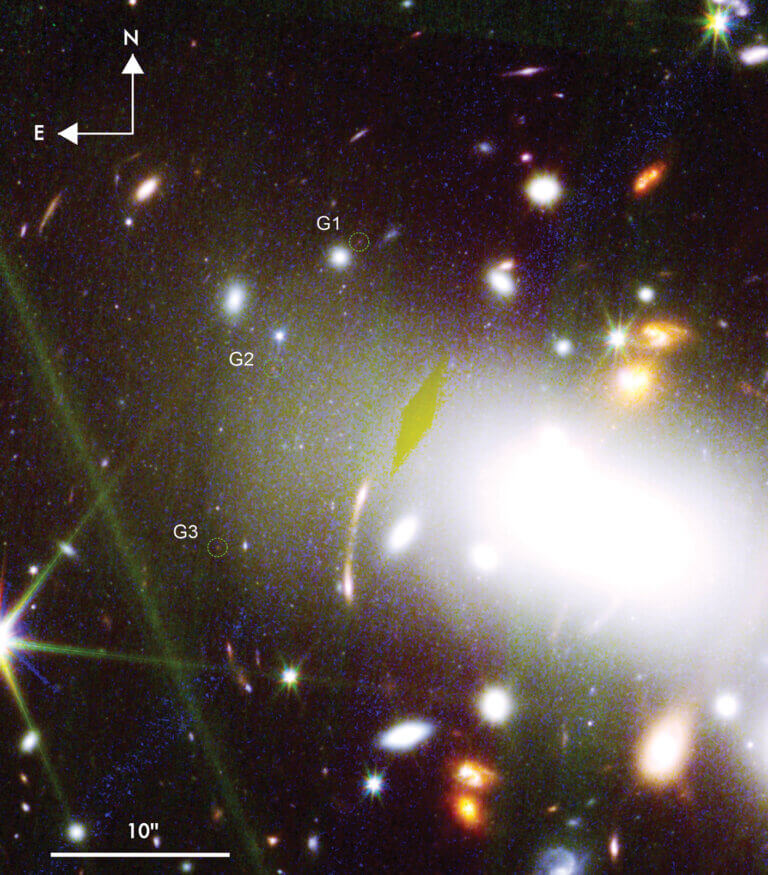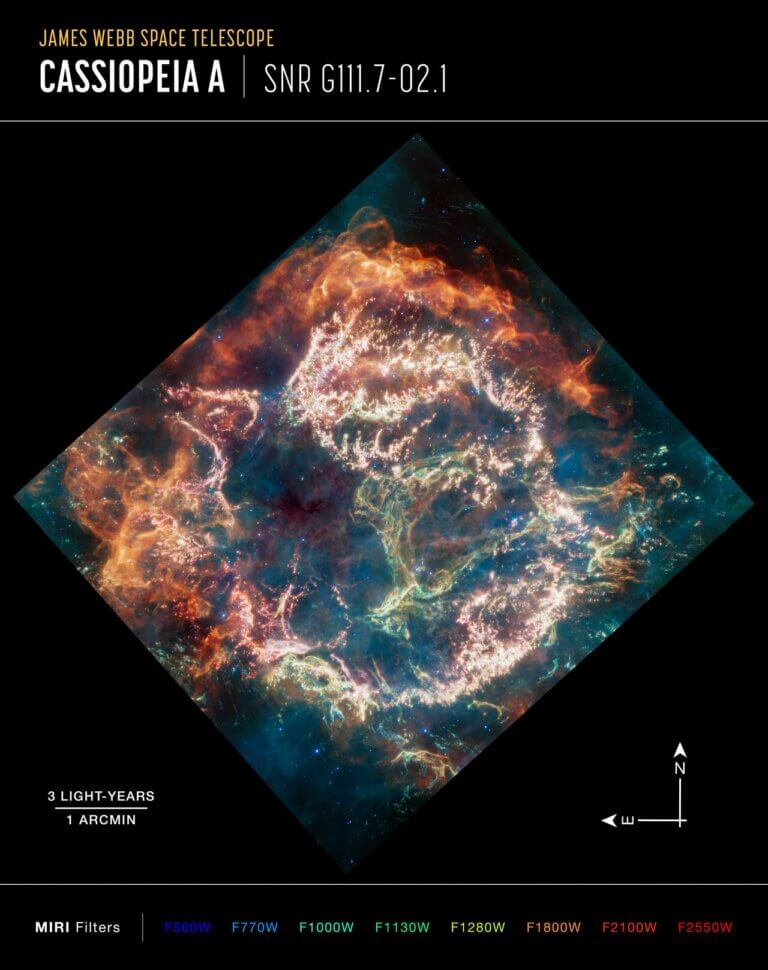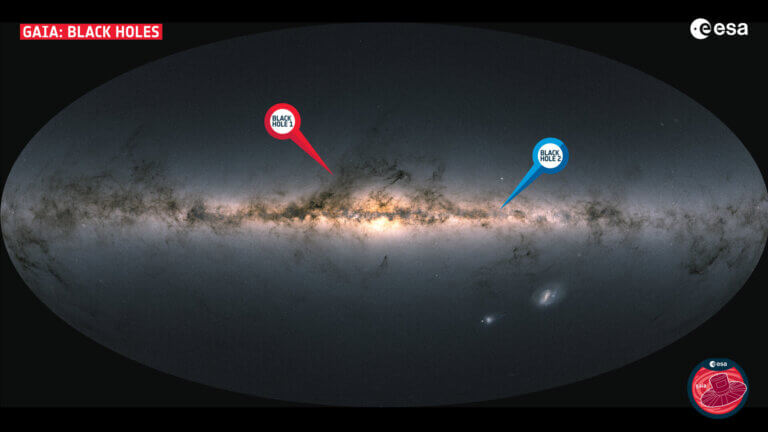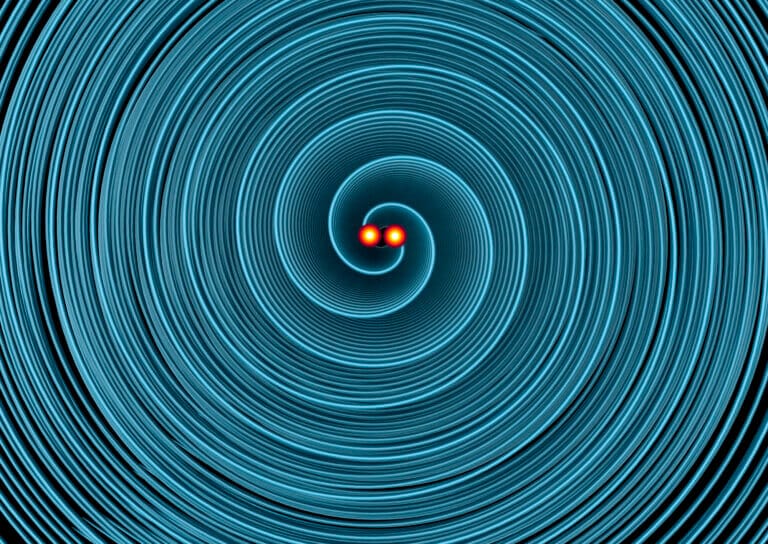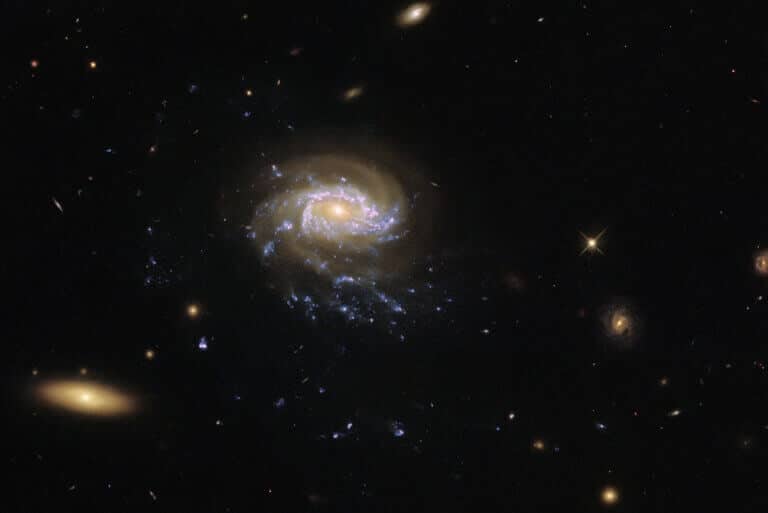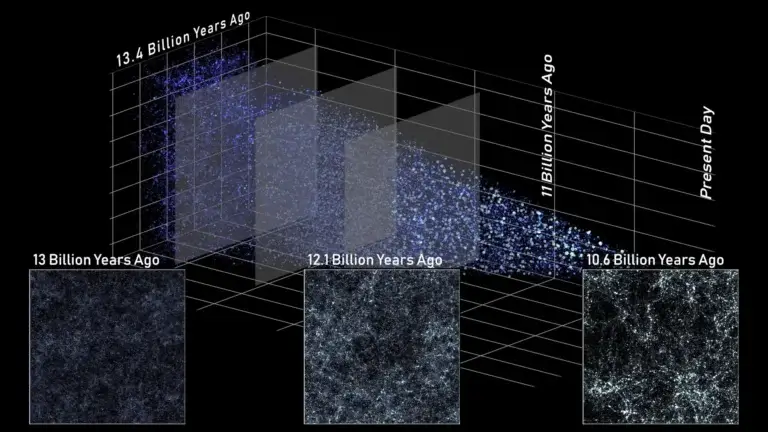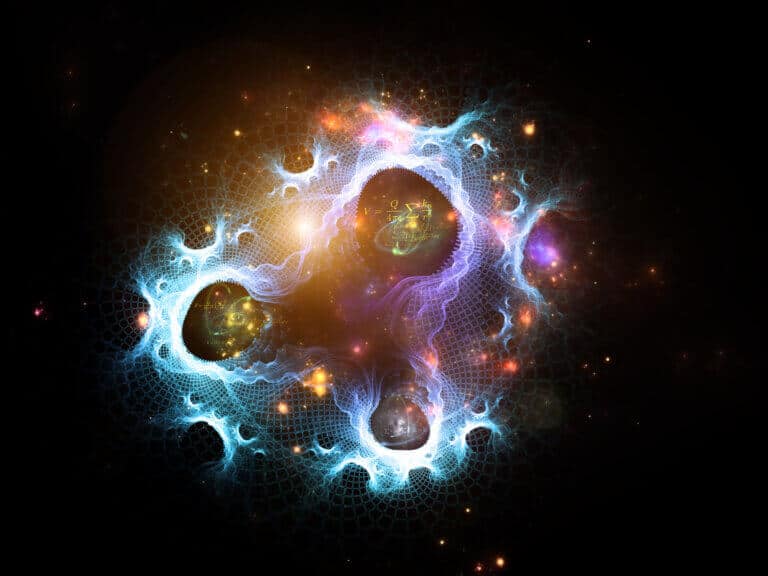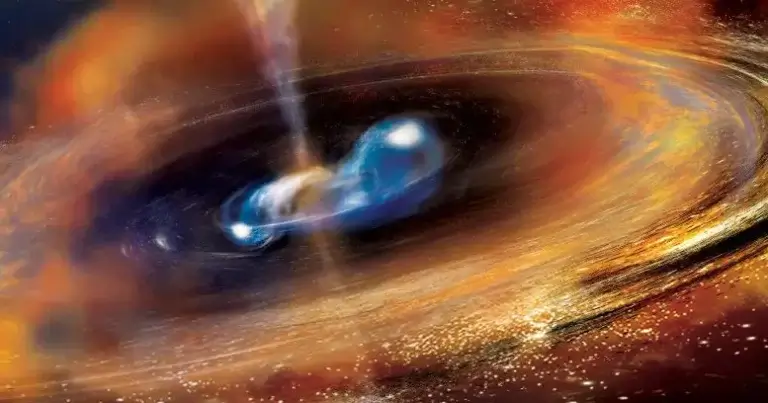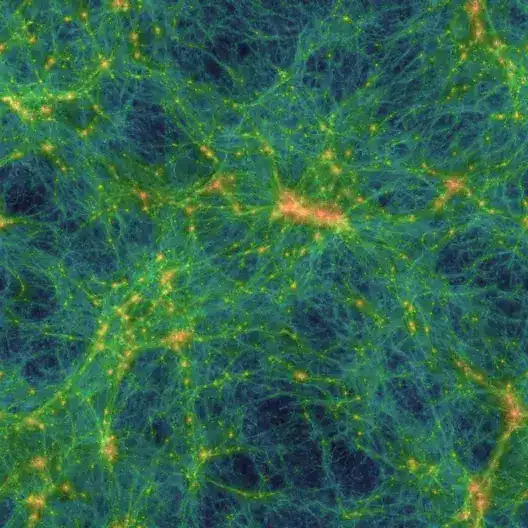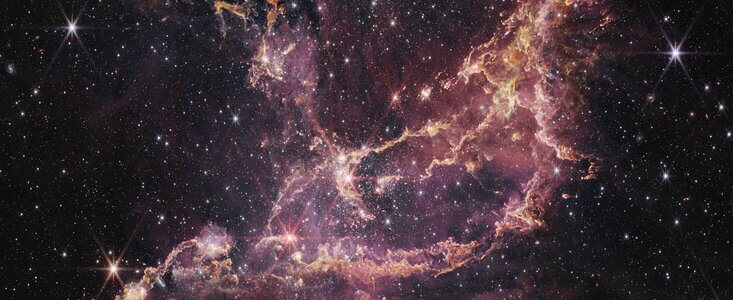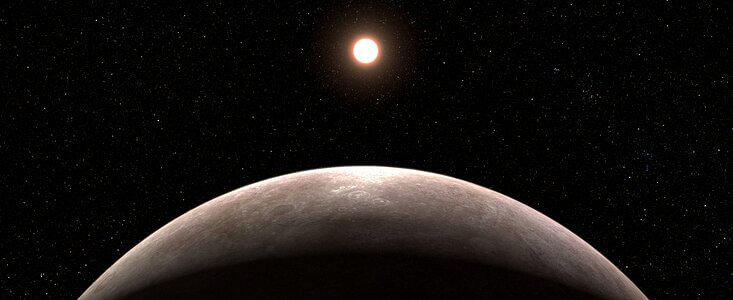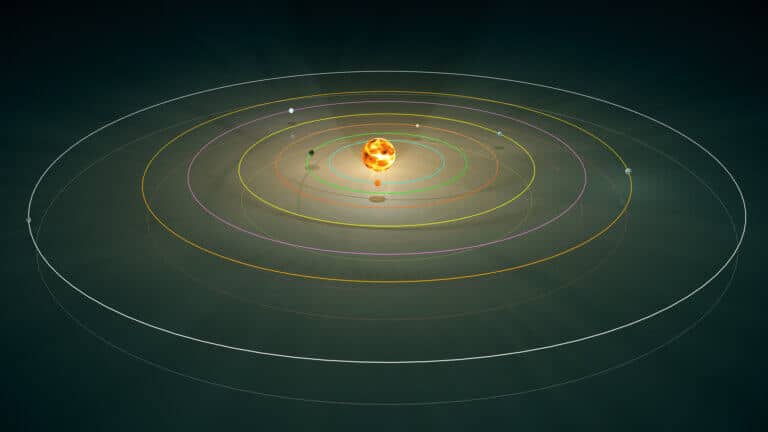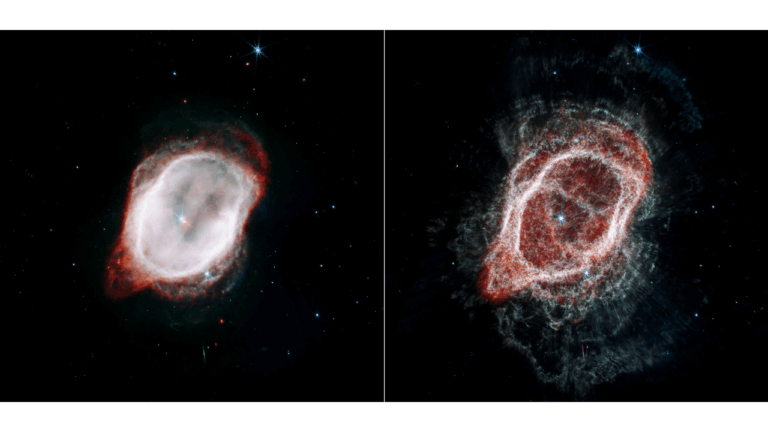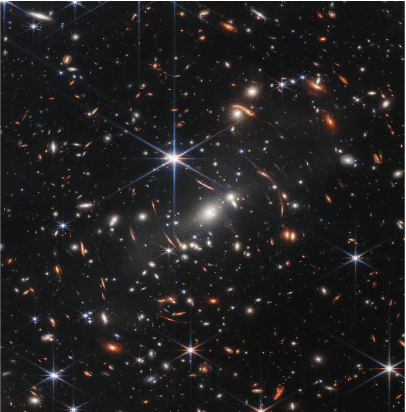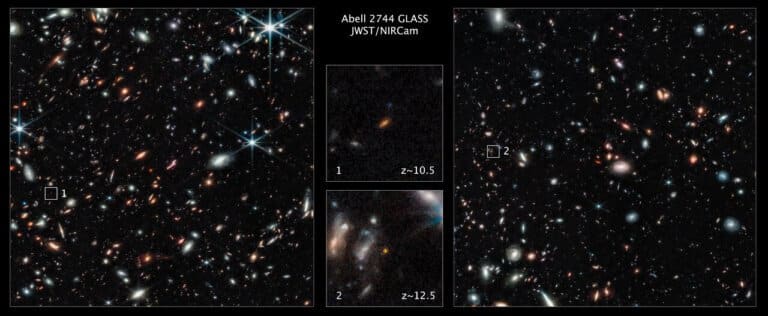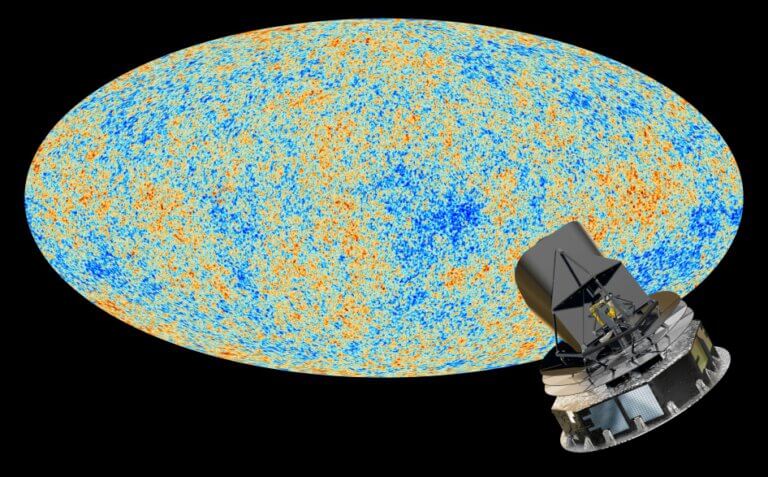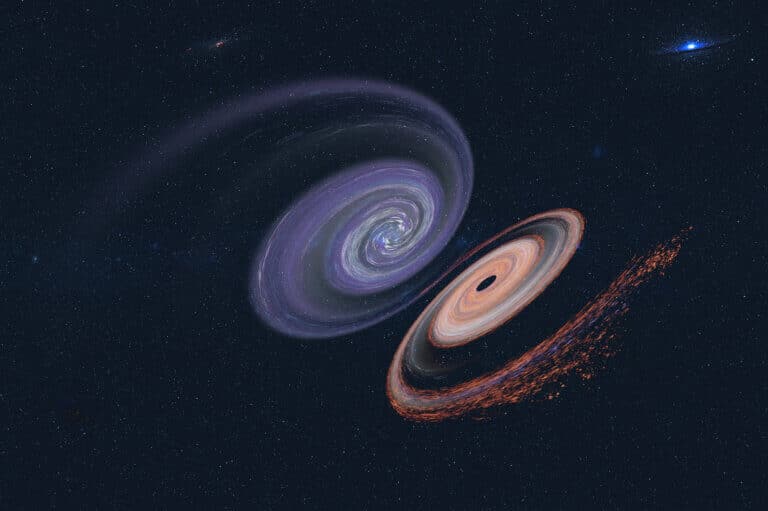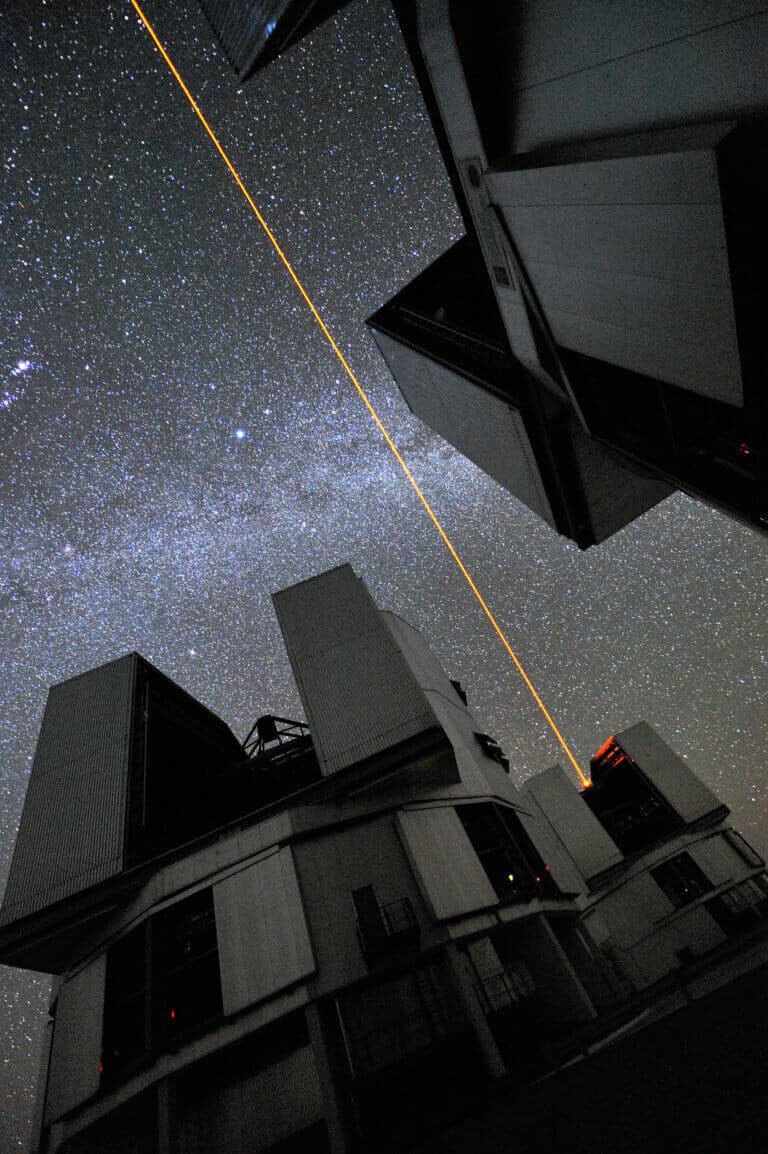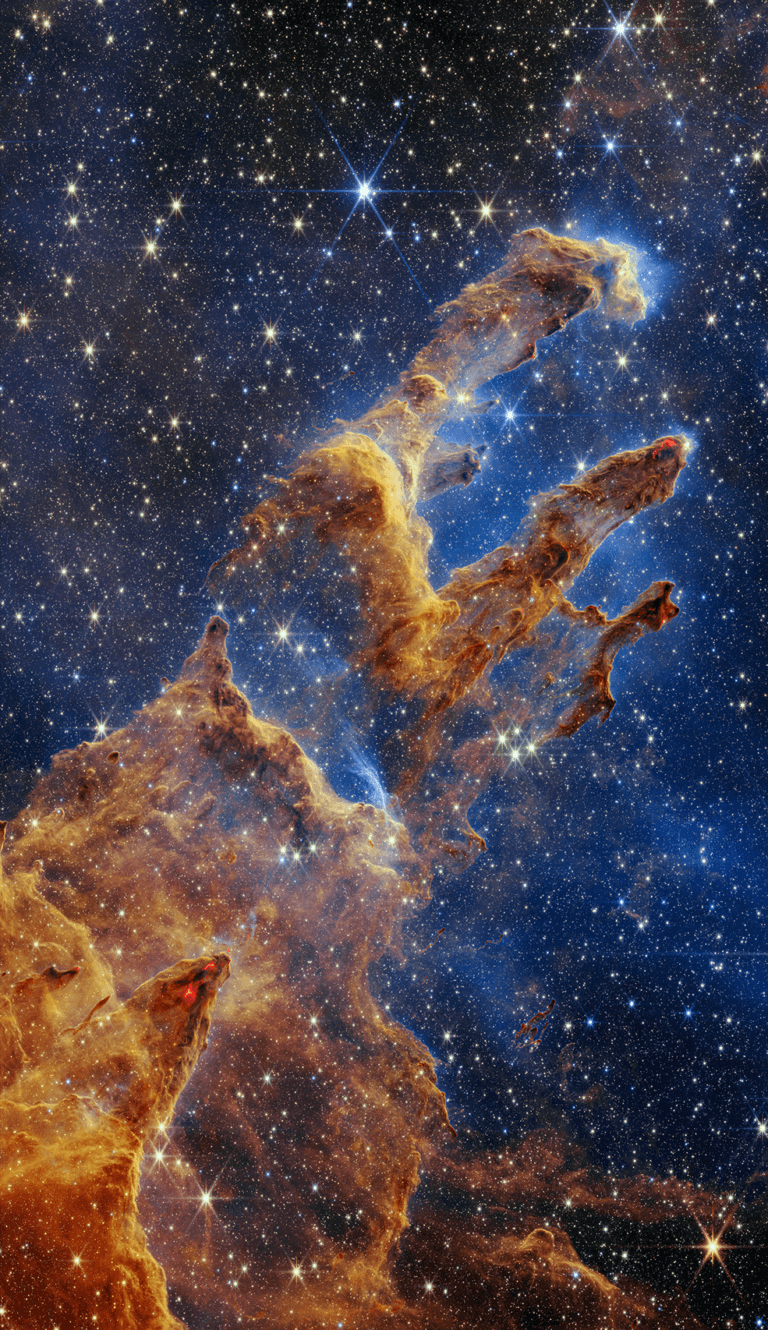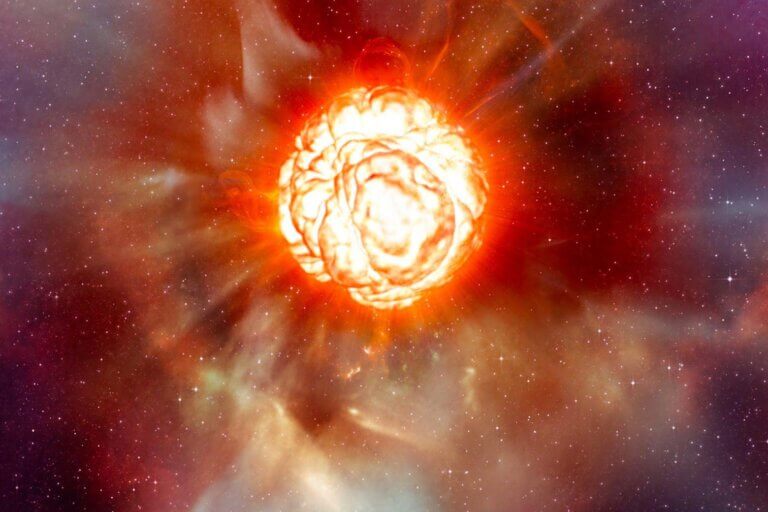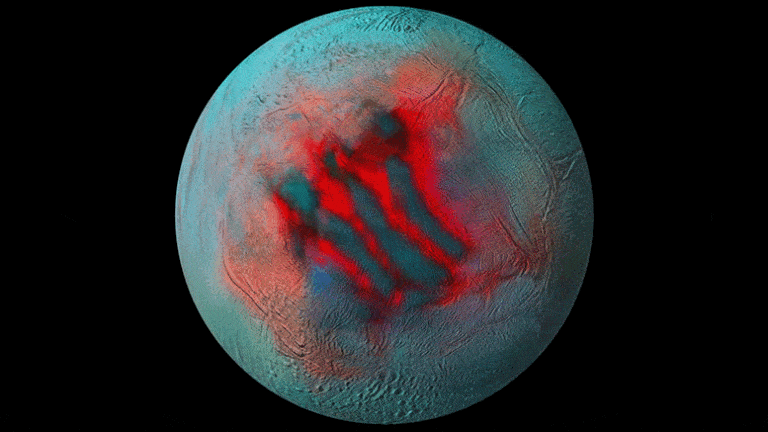Hayadan > Space and astronomy > Astrophysics > Page 5
Astrophysics
- Avi Blizovsky
- April 14, 2023
- One response
The redshift of this galaxy reaches 9.51 meaning that it was seen when the age of the universe was only 550 million years old. The rate of star formation in it is 10 times greater than the Milky Way
- Avi Blizovsky
- April 12, 2023
- 4 תגובות
Webb recorded what remained after the death of a star only 11 thousand light years away from us. It is a relatively new supernova - only 350 years old
- Tel Aviv University
- April 7, 2023
An international team, which includes a group of researchers from Tel Aviv University, has identified the first black hole, Gaia BH1, which is 1500 light years from Earth
- The Voice of Science website - the Israel National Science Foundation
- March 24, 2023
Gravitational wave analysis hints at the way black hole pairs are formed
- Avi Blizovsky
- March 11, 2023
- 3 תגובות
A "Medusa Galaxy" with trailing star tentacles hangs in inky darkness in this image taken by the Hubble Space Telescope
- Avi Blizovsky
- March 10, 2023
- 3 תגובות
- Avi Blizovsky
- March 8, 2023
- No comments
The study, published in the Astrophysical Journal, was led by researchers from the University of Arizona and the California Institute of Technology. The team used data from NASA's Kepler space telescope launched in 2009 to search for exoplanets, or planets orbiting stars other than our sun
- Avi Blizovsky
- February 11, 2023
- 55 תגובות
A team of scientists made a drastic announcement about one of the most accurate measurements to date of the distribution of matter in the universe using, among other things, the radio telescope at the South Pole
- Avi Blizovsky
- January 23, 2023
- 2 תגובות
The radiation originates in binary stars that have merged after being ejected from their galaxy. Usually bursts that do not occur within a galaxy last a few seconds. In such eruptions, heavy elements including gold and platinum are formed
- Avi Blizovsky
- January 20, 2023
- 129 תגובות
The new hypothetical particles may be able to explain the observations made by the Cosmic Source Spectrograph on the Hubble Space Telescope
- Avi Blizovsky
- January 17, 2023
- No comments
Previous infrared studies of the NGC 346 nebula have focused on stellar embryos heavier than five to eight times the mass of our Sun. With the help of the Web, it is possible to reach even lighter protostars, as small as a tenth of our sun
- Avi Blizovsky
- January 13, 2023
- 2 תגובות
However, the conditions there are more reminiscent of Venus than Earth. It orbits a red dwarf in an orbit that lasts only two days * Webb was able to confirm the existence of the planet after only two orbits
- Avi Blizovsky
- December 18, 2022
- 6 תגובות
A computerized system classifies the atmospheres of planets outside the solar system. and determines which of them are capable of sustaining human settlement in the future
- The Technion
- December 16, 2022
- No comments
Researchers at the Faculty of Physics at the Technion present surprising discoveries regarding the development of the rings around the "Southern Ring Nebula"
- Noam Chai
- December 3, 2022
- 8 תגובות
A team of researchers from Harvard University, MIT and Calcutta in collaboration with Google successfully simulated a traversable wormhole with the help of a quantum computer. The experiment performed on Google's quantum processor demonstrated the passage of information in the interlaced system. According to the principle of holography, the physics demonstrated in the experiment is the same as that of particles passing through wormholes. Although it was conducted on only nine qubits, the experiment is of great importance because it illustrates for the first time the possibility of testing quantum gravity with the help of entangled systems.
- Tel Aviv University
- December 2, 2022
According to the groundbreaking findings, the first galaxies were small and dim. They were dimmer than galaxies today, converting only less than 5% of their gas into stars. Also, the first galaxies did not emit much higher intensity radio radiation than we see today
- Avi Blizovsky
- November 18, 2022
- 9 תגובות
One of these galaxies is observed as it appeared about 300 million years after the Big Bang and shines much brighter than expected. This figure now makes researchers estimate that the first galaxies were formed 100 million years after the Big Bang. "It's like an archaeological dig, when you suddenly find a lost city or something you didn't know about," said one of the researchers
- Science site The Conversation
- November 13, 2022
- 7 תגובות
Researchers who have examined whether Einstein's theory of gravity works on the largest possible scale claim that there are deviations that need to be checked and corrected similar to those at small distances that can be answered using quantum theory
- Avi Blizovsky
- October 30, 2022
- One response
Researchers simulated the harsh ionizing radiation conditions of Mars to see how long freeze-dried bacteria and fungi could survive
- Avi Blizovsky
- October 27, 2022
- 11 תגובות
Cardiff University researchers have detected a strange twisting motion in the orbits of two colliding black holes, an exotic phenomenon predicted by Einstein's theory of gravity
- Science site The Conversation
- October 24, 2022
- One response
New technologies could enable the discovery of technological markers from intelligent beings on distant planets
- Avi Blizovsky
- October 21, 2022
- No comments
NASA's James Webb Space Telescope captured a rich and highly detailed view of the "Pillars of Creation." A region where new stars form within dense clouds of gas and dust that was previously captured in an iconic image by the Hubble Space Telescope at the start of its operation and returned to after upgrades, along with Strong landmasses
- Avi Blizovsky
- October 20, 2022
- One response
In this new study, the researchers determined that massive stars (typically between 8 and 20 solar masses) in the "red supergiant" phase will suddenly become about a hundred times fainter in visible light a few months before they die. This dimming is caused by a sudden accretion of material around the star, obscuring its light
- Science site The Conversation
- October 19, 2022
- No comments
The discovery also has value in a completely different field - the search for life on planets outside the solar system
- Dr. Moshe Nahamani
- October 14, 2022
- No comments
Scientists have found that the surface of Enceladus is apparently rich in phosphorus, a key component for sustaining life.

